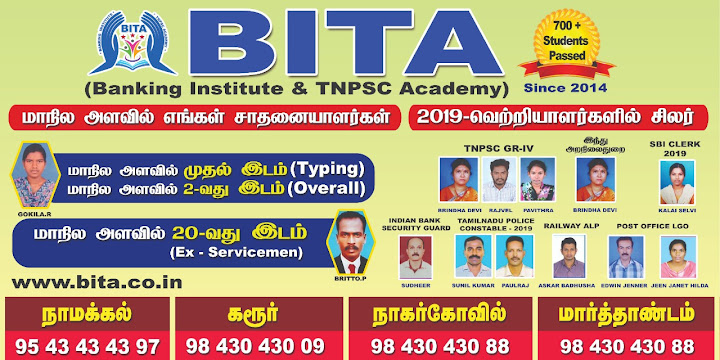Q1. These are the specially designed computer chips reside inside other drives, such as your car or your electronic thermostat.
(a) Server
(b) Workstation computer
(c) Embedded computer
(d) Mainframe computer
(e) None of these
An embedded system is a computer system with a dedicated function within a larger mechanical or electrical system, often with real-time computing constraints. It is embedded as part of a complete device often including hardware and mechanical parts. Embedded systems control many devices in common use today.
An embedded system is a computer system with a dedicated function within a larger mechanical or electrical system, often with real-time computing constraints. It is embedded as part of a complete device often including hardware and mechanical parts. Embedded systems control many devices in common use today.
Q2. Today’s RAM’s common form is built with
(a) Transistors
(b) Vacuum tubes
(c) Semiconductor’s ICs
(d) Superconductor’s ICs
(e) None of the above
Most modern semiconductor memory devices are implemented allowing random access
Most modern semiconductor memory devices are implemented allowing random access
Q3. A string of eight 0s and 1s is called a:
(a) Megabyte
(b) Kilobyte
(c) Gigabyte
(d) Byte
(e) None of these
A byte contains a combination of total eight 0s or 1s
A byte contains a combination of total eight 0s or 1s
Q4. There are ______ unique digits available in Hexadecimal number system.
(a) 16
(b) 17
(c) 18
(d) 19
(e) 20
In hexadecimal system there are 16 unique symbols.
In hexadecimal system there are 16 unique symbols.
Q5. What is the base or radix of the decimal number system?
(a) 2
(b) 8
(c) 10
(d) 16
(e) 20
Base of decimal number system is 2.
Base of decimal number system is 2.
Q6. The term is used to describe the intangible instructions that tell the computer what to do is known as
(a) Hardware
(b) Software
(c) Storage
(d) Input/output
(e) None of these
Software is the intangible component through which a computer may receive instructions.
Software is the intangible component through which a computer may receive instructions.
Q7. A set of instructions telling the computer what to do is called
(a) Mentor
(b) Instructor
(c) Complier
(d) Program
(e) Debugger
A program is a set of instructions that govern functioning of a computer.
A program is a set of instructions that govern functioning of a computer.
Q8. Programs designed to perform specific tasks related to managing computer resources are called
(a) Operating system
(b) Helper software
(c) System software
(d) Application software
(e) Utility software
Application software are designed to perform specific tasks related to managing computer resources
Application software are designed to perform specific tasks related to managing computer resources
Q9. _____ is a Windows utility program that located and eliminates unnecessary fragments and rearranges filed and unused to disk space to optimise operations.
(a) Backup
(b) Disk cleanup
(c) Disk defragmenter
(d) Restore
(e) Disk restorer
Disk defragmenter is a Windows utility program that located and eliminates unnecessary fragments and rearranges filed and unused to disk space to optimise operations.
Disk defragmenter is a Windows utility program that located and eliminates unnecessary fragments and rearranges filed and unused to disk space to optimise operations.
Q10. Which command is used to set a name to a disk in DOS?
(a) VOLUME
(b) VOL
(c) LABEL
(d) DISKLABEL
(e) None of these
Label (command) In computing, label is a command included with some operating systems (e.g., DOS, OS/2 and Microsoft Windows). It is used to create, change, or delete a volume label on a logical drive, such as a hard disk partition or a floppy disk.
Label (command) In computing, label is a command included with some operating systems (e.g., DOS, OS/2 and Microsoft Windows). It is used to create, change, or delete a volume label on a logical drive, such as a hard disk partition or a floppy disk.
Q11. Which of the following operating does not implement multitasking truly?
(a) Windows 98
(b) Windows NT
(c) Windows XP
(d) MS DOS
(e) None of these
MS DOS is not multitasking truly.
MS DOS is not multitasking truly.
Q12. What is the meaning of .EXE?
(a) Command File
(b) Express File
(c) Executable Files
(d) System File
(e) None of these
EXE is extension for executable files
EXE is extension for executable files
Q13. CUI stands for
(a) Character Using Interface
(b) Character Unique Interchange
(c) Chrome User Interface
(d) Character User Interface
(e) None of these
CUI stands for Character User Interface
CUI stands for Character User Interface
Q14. To ‘maximize’ a window means to
(a) Fill it to capacity
(b) Expand it to fit the desktop
(c) Put only like files inside
(d) Drag it to the Recycle Bin
(e) None of these
‘maximize’ a window means expanding it to fit the desktop.
‘maximize’ a window means expanding it to fit the desktop.
Q15. Which of the following types of menu shows the further sub-choices?
(a) Reverse
(b) Template
(c) Scrolled
(d) Rapped
(e) Pull-down
Pull down menu shows further sub-choices.
Pull down menu shows further sub-choices.


No comments:
Post a Comment